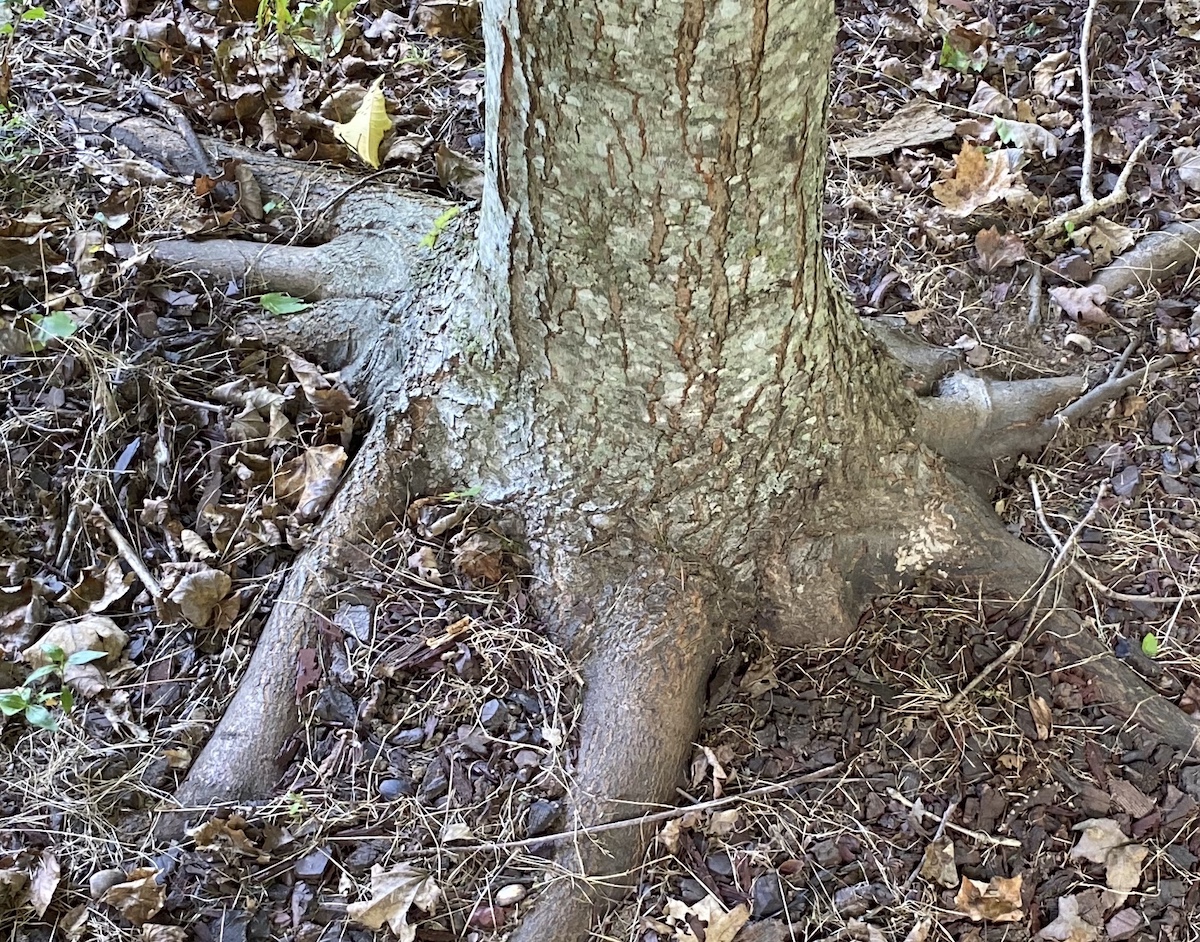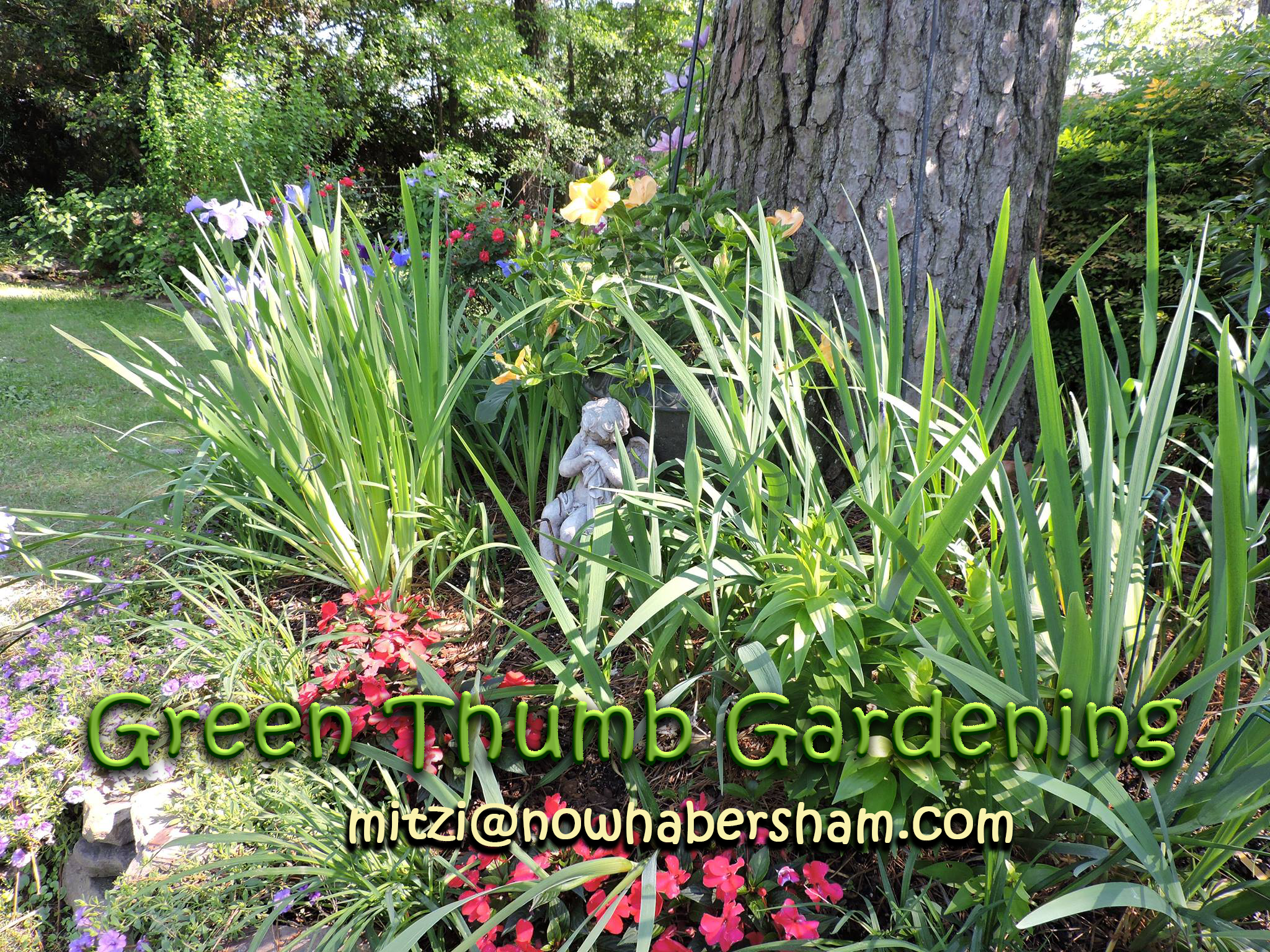
Fall is on the horizon, and it’s time to begin planning for fall planting of trees, shrubs, and perennials. Plants like these benefit greatly from the extra time to get their roots set before the summer starts next June. It is an important time that often makes the difference between survival and replacing a specimen you’ve invested time and money in.
Don’t plant too deep
One of the biggest issues I see on a daily basis comes from planting depth. Trees and shrubs naturally have lateral roots. Those lateral roots need to be at, or even just above the soil surface. Walk in the forest. Look at trees in nature, and you’ll quickly notice almost all of them have root flares. When you look around most landscapes, plants look like lollipops or telephone poles coming out of the ground.
Who got it right? I’m going to guess it wasn’t the person installing the landscape?
The thing that is important to realize for plants is that they need water, soil, organic matter, and air to their roots to survive. If you place those lateral roots too deeply, the plant often tries its best to develop new roots to replace them. These are called adventitious roots. These roots can help your plant struggle along. If you’re watering it enough, it might live. It just doesn’t seem to grow much.
As these new roots develop, the tree begins to give up on the original lateral roots, and then pathogens set in. Next thing you know, your tree is in decline, and that’s when you call me. You often won’t like the response I give, but just know it’s out of love for you. I want you to find the best path to success. That path includes doing it correctly the next time.
Once a tree or shrub exhausts its reserves and loses its base, you’ll see the plant slowly decline and die. How long does this take? More often than not, it’s around 3-5 years for most plants, long after your big box guarantee is gone. That’s why they can afford to extend the 1-2 year guarantees.
How to landscape successfully
So how do we find success in the landscape? The first thing is to become very selective at the garden center. Take the plants out of the pot. Examine the root system. Make sure they’re healthy and vigorous. Leave plants that are pot bound or poor at the store. Make sure to rule out plants with potential girdling or constricting roots.
The next step is to get home and make sure you’re putting the right plant in the right place. I visited a home the other day with five beautiful dogwoods. They were around 2 inches caliper and cost a pretty penny. Problem is, they were in full afternoon sun. They were also planted too deeply. I’m guessing they’ll be gone in 2-3 years. If they had only been planted correctly, and in some shade, they could provide the homeowner a lifetime of joy. The client asked about moving them, which may be possible, but long term success depends on how much damage was done to the root system being too deep for so long.

Once you know you’ve got the right plant for the right place, it’s time to dig the hole. Figure out the depth of those top lateral roots and dig the hole to that depth, or maybe even 1-2 inches less. Make the hole at least 2-3 times as wide as the root ball. Wider is even better to give the roots a nice area to venture into when it’s time. If you want to amend the planting hole, you need to know it’s best not to amend the planting bed or, least of all, the entire future root zone of the plant. Amending the planting hole [adding products to the soil to improve the soil’s condition] in Georgia creates a nice pot for your plant to die in later. Remember, you want them to establish into the native soil. That planting hole is a temporary start. If they can’t venture out, they’re doomed from the start.
Once planted, it’s important to cover the planted root zone with bark or pine straw. Notice I didn’t say wood chips, pea gravel, or painted mulch. Give the plant 2-3 inches of mulch out to the drip line. Make sure not to pile it up on the trunk. Keep the plant watered over the next few months, focusing on a few deep watering events to mimic 1-2 inches of rainfall until you feel the tree is set. From there, keep an eye out for any new roots developing into constricting and girdling roots. These can be removed as the tree or shrub grows.
Hopefully, if you follow these tips, you’re investing in someone else’s future. Trees and shrubs can be very long-lived if they’re planted correctly. Hopefully, one day your grandkids can be talking about the shade you created.

